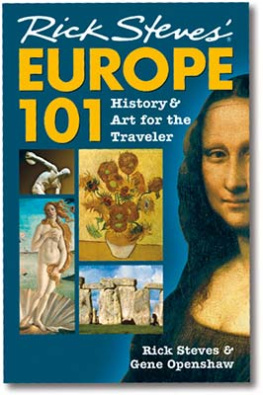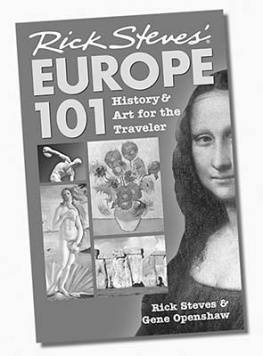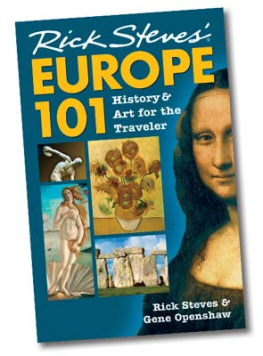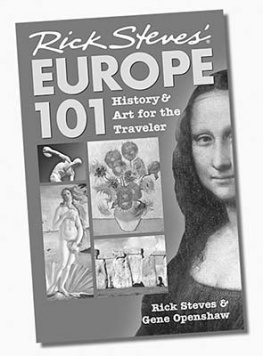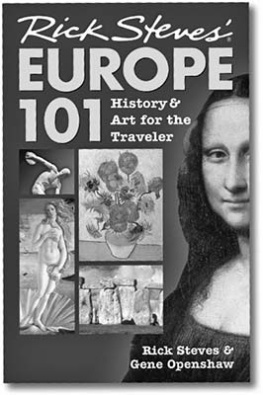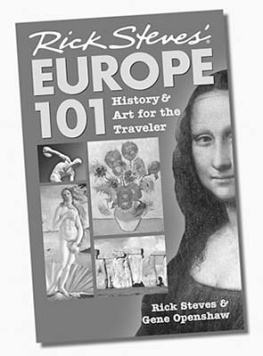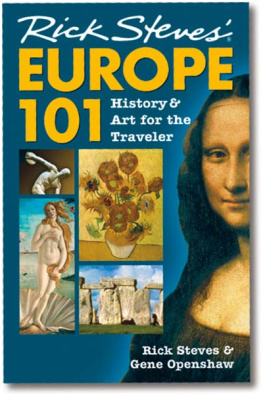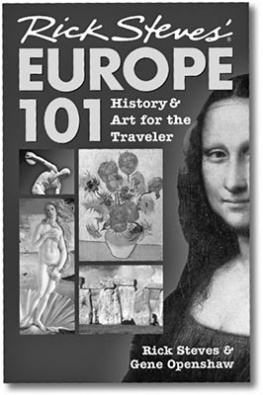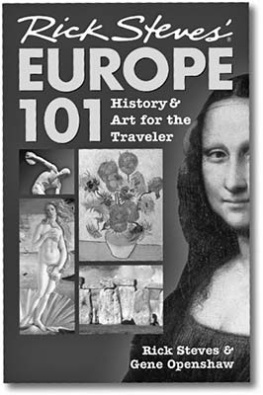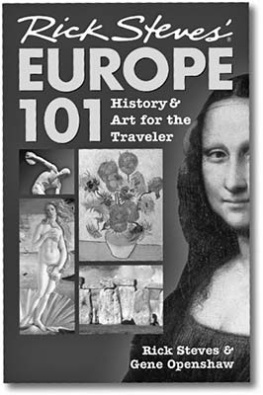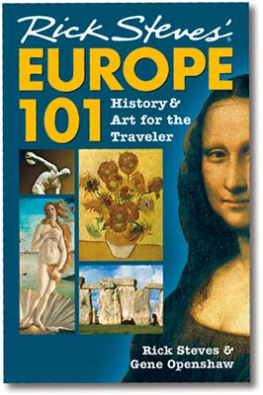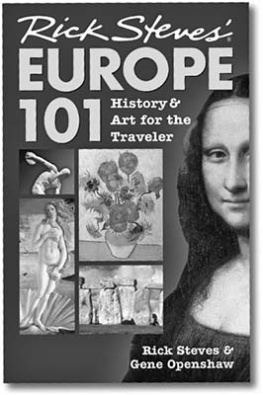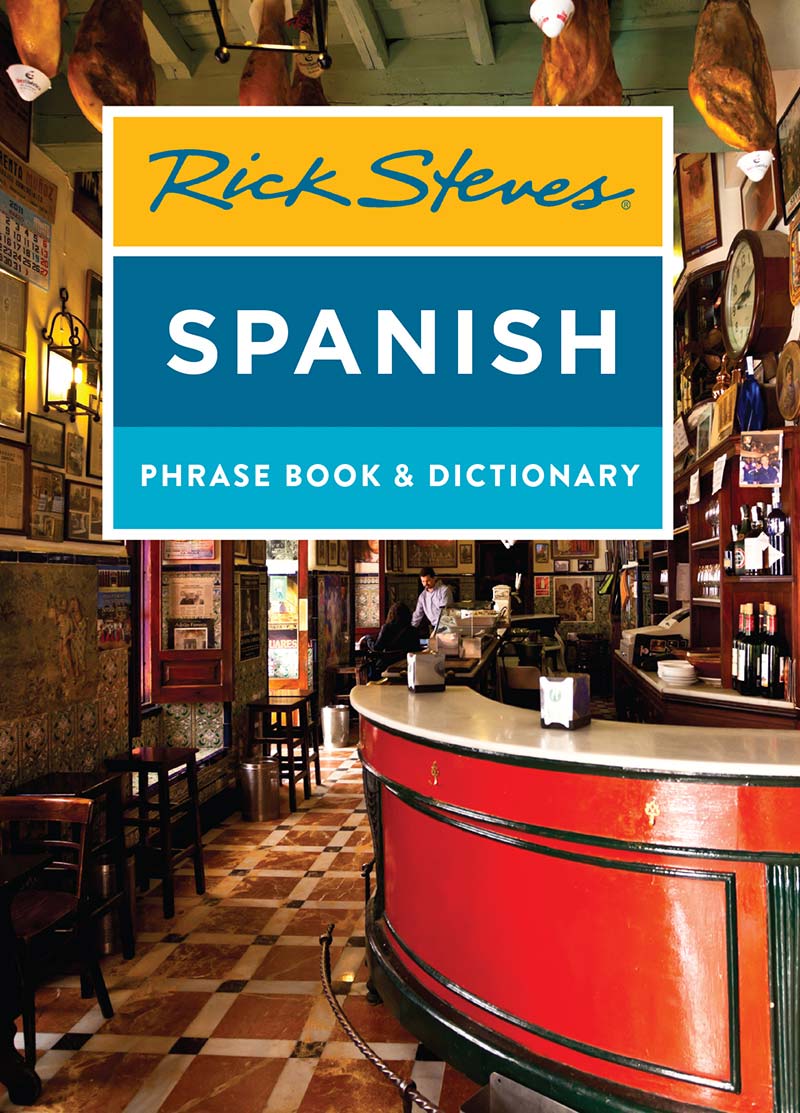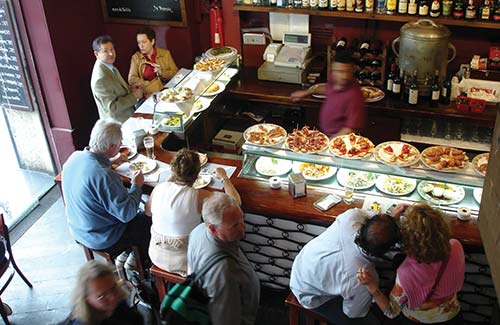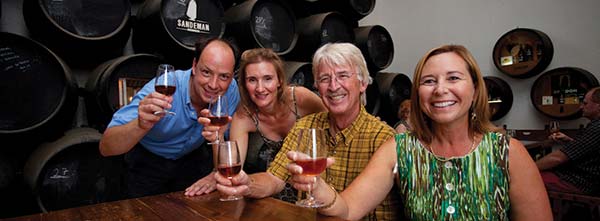Contents
Contents
Rick Steves
SPANISH
PHRASE BOOK & DICTIONARY
Hi, Im Rick Steves. Im the only monolingual speaker I know whos had the nerve to design a series of European phrase books. But thats one of the things that makes them better. You see, after more than 30 years of travel through Europe, Ive learned firsthand: (1) whats essential for communication in another country, and (2) whats not. Ive assembled the most important words and phrases in a logical, no-frills format, and Ive worked with native Europeans and seasoned travelers to give you the simplest, clearest translations possible. But this book is more than just a pocket translator.
The words and phrases have been carefully selected to help you have a smarter, smoother trip in Spain without going broke. Spain used to be cheap and chaotic. These days its neither. Its better organized than everand can be as expensive as France or Germany. The key to getting more out of every travel dollar is to get closer to the local people, and to rely less on entertainment, restaurants, and hotels that cater only to foreign tourists. This book will not only help you order a meal at a locals-only Sevilla restaurantit will help you talk with the family who runs the place...about their kids, travel dreams, and favorite msica.
Long after your memories of museums have faded, youll still treasure the personal encounters you had with your new Spanish friends. A good phrase book should help you enjoy your travel experiencenot just survive itso Ive added a healthy dose of humor. A few phrases are just for fun and arent meant to be used at all. But most of the phrases are for real and should be used with please (por favor). I know you can tell the difference. While Ive provided plenty of phrases, youll find it just as effective to use even just a word or two to convey your meaning, and rely on context, gestures, and smiles to help you out. To make harried postal clerks happy, dont say haltingly in Spanish: I would like to buy three stamps to mail these postcards to the United States.
All you really need is sellos (stamps), Estados Unidos (USA), por favor (please). Smile, point to the postcards, hold up three fingers...and youve got stamps. (For more advice, see the Tips for Hurdling the Language Barrier chapter.) To get the most out of this book, take the time to practice my Spanish pronunciation tips. But dont worry too much about memorizing grammatical rules, like the gender of a nounthe important thing is to communicate! This book has a nifty menu decoder and a handy dictionary. Youll also find tongue twisters, international words, telephone tips, and two handy cheat sheets. Tear out the sheets and keep them in your pocket, so you can easily memorize key phrases during otherwise idle moments.
As you prepare for your trip, you may want to read one of my many guidebooks on destinations in Spain. While a number of Spanish people speak fine English, many dont. The language barrier can seem high in Spain, but locals are happy to give an extra boost to any traveler who makes an effort to communicate. My goal is to help you become a more confident, extroverted traveler. If this phrase book helps make that happen, or if you have suggestions for making it better, Id love to hear from you at . Buen viaje! Have a good trip!
Spanish opens the door to the land of siestas and fiestas, fun and flamenco.
Buen viaje! Have a good trip!
Spanish opens the door to the land of siestas and fiestas, fun and flamenco.
Imported from the Old World throughout the New, Spanish is the most widely spoken Romance language in the world. With its straightforward pronunciation, Spanish is also one of the simplest languages to learn. Here are some tips for pronouncing Spanish words: C usually sounds like C in cat. But C followed by E or I sounds like the soft TH in think. D sounds like the soft D in soda. G usually sounds like G in go.
But G followed by E or I sounds like the guttural J in Baja. H is silent. J sounds like the guttural J in Baja. LL sounds like Y in yes. sounds like NI in onion. V usually sounds like B in bit. Z sounds like the soft TH in think. Z sounds like the soft TH in think.
Spanish vowels are pronounced like this: A sounds like A in father. E can sound like E in get or AY in play. I sounds like EE in seed. O sounds like O in note. U sounds like OO in moon. Spanish has a few unusual signs and sounds.
The Spanish add extra punctuation to questions and exclamations, like this: Cmo est? (How are you?) Fantstico! (Fantastic!) Youve probably seen and heard the Spanish : Think of seor and maana. Spanish has a guttural sound similar to the J in Baja California. In the phonetics, the symbol for this clearing-your-throat sound is the italicized h. Spanish words that end in a consonant are stressed on the last syllable, as in Madrid. Words ending in a vowel are generally stressed on the second-to-last syllable, as in amigo. To override these rules, the Spanish sometimes add an accent mark to the syllable that should be stressed, like this: rpido (fast) is pronounced rah-pee-doh. When youre speaking a Romance language, sex is unavoidable. Even the words are masculine or feminine, and word endings can change depending on gender.
A man is simptico (friendly), a woman is simptica. In this book, we sometimes show bisexual words like thissimptico[a]to remind you. If youre speaking of a woman (which includes women speaking about themselves), use the a ending. Its always pronounced ah. If a word ends in r, just add an a to make it feminine. For instance, an autor is a male author while an autora is female. Words ending in e, such as amable (kind), apply to either sex.
The endings of Spanish nouns and adjectives agree. Cold weather is


